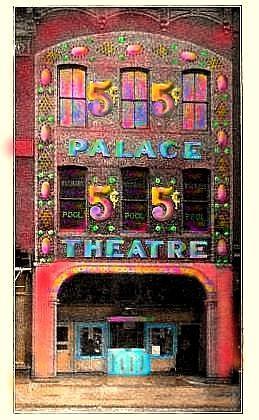
In the early years of the 20th century, on almost any day of the week, it was possible that a passel of lean, dark horses would be seen at a full run, heading pell mell down State Street. Astride each of these horses was a wild-eyed cowboy, clinging like a burr to his saddle. They sped through the sleepy town, these men on horses, amid the acrid smoke and loud pops of old-fashioned six-shooters fired into the air.
Occasionally, one may have spied a low-flying bi-plane that shattered the serene seaside morning as it buzzed the curved shoreline....unsuspecting tourists who strolled along Cabrillo Boulevard would gasp, grasp at their loved ones, and run for cover against the chaotic scene in the sky.
There were times when a woman could be heard to scream as she lay, bound hand and foot, on the Southern Pacific railroad tracks, her shreik competing with the ominous whistle of the 5:15 train....
The world of modern films - silent movies - was born here, in Santa Barbara, where, no matter what the script, the perfect mise en scène was created and captured on film before the director yelled, "Cut!"
________________
In 1909, there were about 2,500 motion picture exhibitors in America. These "exhibitors" showcased films in little theaters and movie palaces from coast to coast - throughout the heartland and hinterlands of the United States.
A few films were made each year, and were owned and distributed by the powerful Patents Company. In the earliest days, movies were actually "photo plays". These plays were all filmed indoors in relatively small sound studios.
At that time, most movies were made by George Spoor and Gilbert Anderson, who had formed the Essanay Film Company (from "S and A"). Their photoplays were filmed in studios located in Wisconsin, New York or Chicago, and the final products were distributed and routed to theaters through the Motion Picture Distributing Company.
But by 1910, there were a host of independent film makers - mavericks - men who did not want to be controlled by the politics and rigid methods of the Patents Company. SS Hutchinson, who owned the Chicago-based American Film Company, concocted a plan to lure some of the best Essanay film-makers and actors away from their parent company.
Alan Dwan, J. Warren Kerrigan, Charles Ziebarth, and others from Essanay joined Hutchinson in his new venture. The group joined the American Film Company and together, they formed the Flying A Studios. The independent Flying A Studios allowed for creativity and innovation that had not been possible within the confines of the Essanay way of doing things.
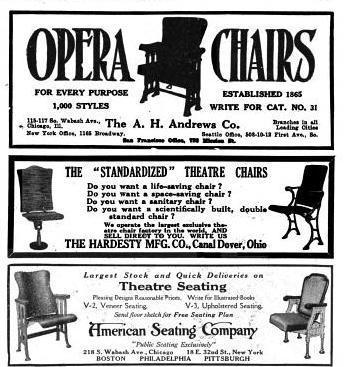
The first order of business was to get away from photo plays. Film-goers had become more sophisticated, and they wanted big action, vivid scenery, and realism. SS Hutchinson and his Flying A Studios determined that they would create it.
Hutchinson had visited Southern California, and knew that the excellent weather, the variety of scenery available, and the many days of bright sunlight would be the perfect atmosphere for creating these new types of movies. He sent his crew to La Mesa, California, (near San Diego) to set up shop. They filmed most of the movie scenes out of doors.
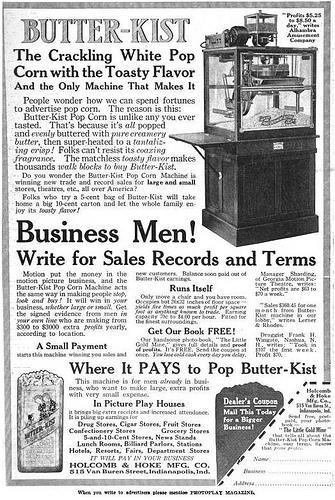
New technology was needed to support this shift to filming action and drama outdoors - new lighting techniques were developed to facilitate filming after dark; lighter and more sophisticated camera equipment was necessary, as were better camera lenses. Equipment became more portable and easy to use, even away from the studio. Film processing was enhanced. These improvements brought an increase in quality and believabilty to the web of fantasy that film makers were now able to offer.
The world delighted in the dramatic action, the vivid comedies, the special effects and stunts that were performed, along with the natural beauty and realism that were displayed on the big screen. They wanted more.
Soon, the American Film Company sent scouting crews all over Southern California to seek new opportunities for filming locations.
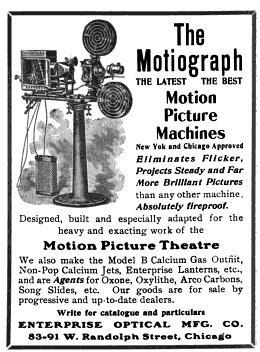
SS Hutchinson considered his options carefully. Widespread publicity and rave reviews from America's wealthiest citizens had imbued Santa Barbara, California, with a reputation as a charming and desireable vacation destination and residence. Santa Barbara was always described in superlatives, and was perceived as a year-round summer-land whose temperate climate and natural wonders were seemingly wreathed by perfumed vines that flowered year-round at the edge of a gentle shore edged by an azure sea.
No kidding.
The reality for the movie industry was that abundant sunshine most days of the year would allow for copious filming opportunities, and the variety of landscape and scenery options could be used to depict almost any spot on earth. The world already held the little town in great esteem, and setting the Flying A Company in Santa Barbara would offer a romantic and fanciful élan that Wisconsin or Illinois just could not impart.
Also - Hutchinson knew Santa Barbara was a viable location for a film studio, as Essanay had successfully filmed several of the original Bronco Billie movies here....
Hutchinson was sold. Although the American Film Company remained based in Chicago, Santa Barbara was its new western home.
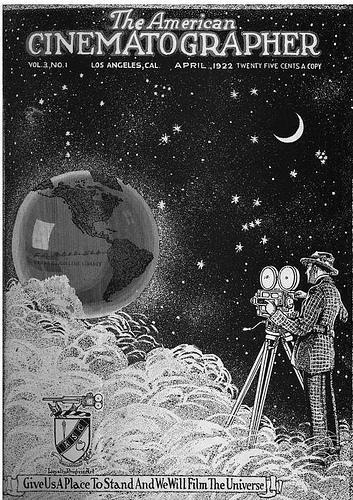
According to old Santa Barbara city directories, there was an ostrich farm located on upper State Street (near the corner of today's Mission and State Streets). This was deigned to be the perfect site for the new film company - near sea and mountain, and just outside the little city. The ostriches were evicted, and the actors were installed. The American Film Company/Flying A Studio began by building an outdoor stage, converting the old house into offices, and constructing workspaces for creating costumes and scenery, and for processing film.
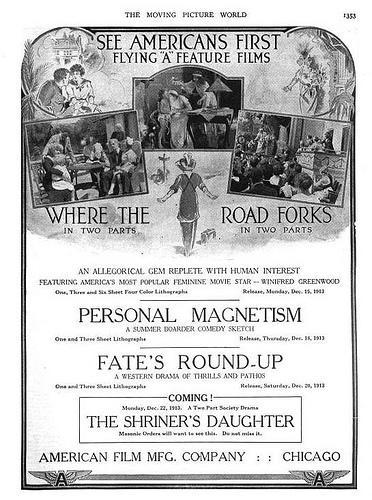
The American Film Company
Santa Barbara and vicinity furnish the incidental scenery and background for one of America's largest industries - the manufacture of motion picture films.
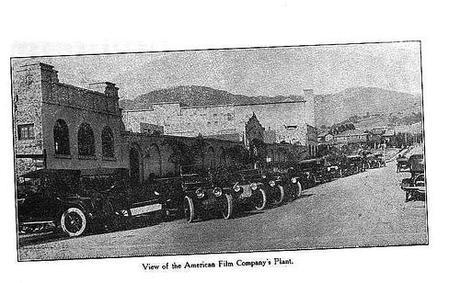
In July, 1912, the American Film Company established its studio at Santa Barbara, and beginning with only one company of players, has developed a plant now employing from eleven to thirteen companies, and has a payroll amounting to thousands of dollars weekly.
The continued presence of the American Film Company at Santa Barbara is due to the fact that that city and surrounding country offers practically every scenic location necessary for making pictures, adaptable to almost every situation and subject.
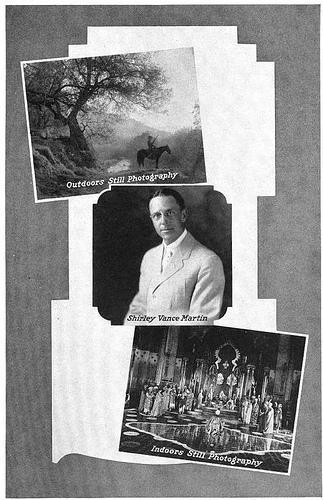
There are mountains and canyons, deserts, the Pacific ocean with its rocky cliffs, caves, and sandy beaches, noted hotels, and homes that range from the old adobes of Mission days, to the beautiful estates of millionaires. In recent months, President Samuel S Hutchinson of the American Film Company has inaugurated construction work at the local studio which will make the plant, long noted for its efficiency, one of the most complete in the world.....
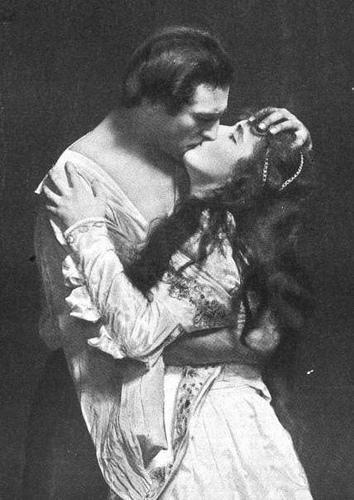
The local manager of the industry at Santa Barbara is Mr PG Lynch.
~ Gidney, Brooks, Sheridan, History of Santa Barbara, Ventura, and San Luis Obispo Counties, 1917
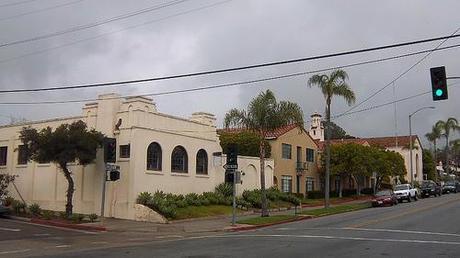
The studio completed two features a week in the beginning - 1,000 feet of film for each. After shooting the movie, the film would be sent back to Chicago for final processing and basic editing. The negative would be returned to Santa Barbara for final editing, and sent back to Chicago for approval and distribution.
Santa Barbara fell instantly in love with the city's newest resident: the movie industry.
The flying Lougheed brothers, along with Jack Northrup and Glenn Martin (later of Lockheed-Martin and Northrup Aerospace) brought the world some of the first aerial views of the earth captured on film - shot from the clear blue skies above Santa Barbara. Wild stunts took place throughout the town and surrounding areas, to the amusement - and sometimes, bemusement - of tourists and townspeople.
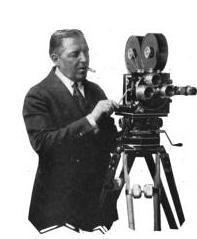
Kevin Starr, California State Librarian and eminent historian, relates a story about a dramatic scene being filmed in downtown Santa Barbara in those early days. The film crew loaded a car with dummies, and sent it careening down State Street. The stunt went awry, the car slammed into the limosine that had been parked alongside the curb. Dummies were flung into the air, and landed on the street. Horrified passers-by, as well as the limosine's owner - a Montecito resident - imagined at first that the dummies were real bodies. All parties were relieved to find that the carnage was not real, and the only damage done was to the limo.
Other unusual scenes played out around town - Warren Kerrigan and other actors filmed a riotous sword fight for use in The Adventures of Jacques;
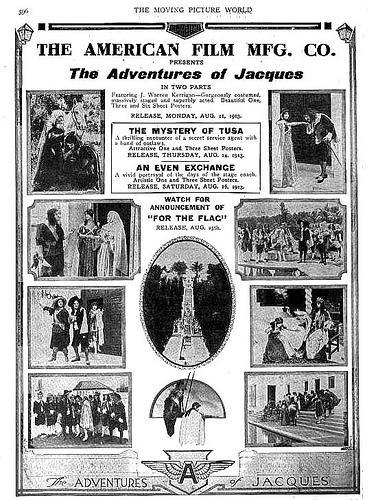
...there were shoot-outs between bandits and sheriffs' posses in the rugged back country of Santa Barbara county; the local railroad tracks were used to film episodes of The Perils of Pauline; and a beautiful and controversial young actress, Audrey Munson, starred in Purity, where she appeared in the world's first nude scene, set in the dappled shade of a California sycamore tree that grew near a creek just outside of town.
There was much excitement surrounding the presence of the actors and movie moguls around town, as well. On any day of the week, Mary Pickford, Mabel Normand, Lon Chaney, Mary Miles Minter, Audrey Munson, Fatty Arbuckle, Lou Tellegen, Thomas Ince, or DW Griffith, might be seen. They ate in local restaurants, bought their groceries at Diehl's Market on lower State Street, and made use of the goods and services offered by local craftsmen and merchants. Movie stars were often seen at the beach, walking downtown, at the country club and at social events in the area. They had really become a part of the community.
With each new film, movie production improved and became more sophisticated. Soon, it was possible to screen a movie just 24 hours after filming, and obtain retakes, if necessary. Flying A added a still-photography studio so they could produce publicity photos, they enlarged the indoor filming studios, and added an updated film processing studio. They even built an entire old western town, located at the back of the lot where ostriches used to graze. From 1912 to about 1919, Santa Barbara was deemed the film capital of the world.
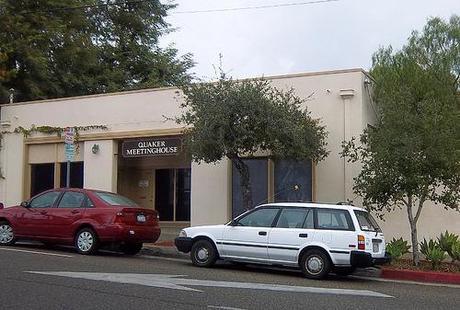
However, as American movie-goers expanded their appetite for films, they began to crave movies set in urban environments. American and the Flying A staff found themselves traveling southward more and more often, to access suppliers, production companies, and to secure actors and extras. Los Angeles also provided the urban setting that was becoming so popular.
And just like that - the world's movie capital in Santa Barbara was abandoned. By the time movie production had ceased in Santa Barbara, about 1,200 movies had been filmed in and around the area.
Hollywood received her crown and title of Film Capital of the World. And so it remains today.
The Flying A Studio propety in Santa Barbara was eventually abandoned. It languished for years, being used intermittently as a place for religious revival meetings, then a roller rink, a USO dance hall, and eventually a mortuary.

Today, the property houses an architect's office, the Quaker Society meeting place, a Buddhist meditation center, dentist offices, apartments,

a restaurant, and other little businesses. The rose arbor, beneath which the world's early movie stars would gather and mingle - belongs to the architect now.
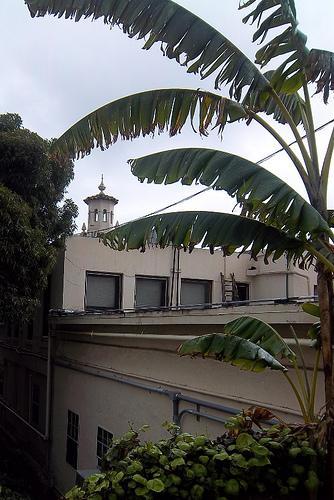
Today, it is possible to find other remnants of the early film industry can be found throughout the downtown area of Santa Barbara. A few blocks south of the original movie studios, the Flying A Studio Boarding House stands on De la Vina Street. The property has not changed much in the past 100 years, and the buildings on the property are still used as apartments and residences today.
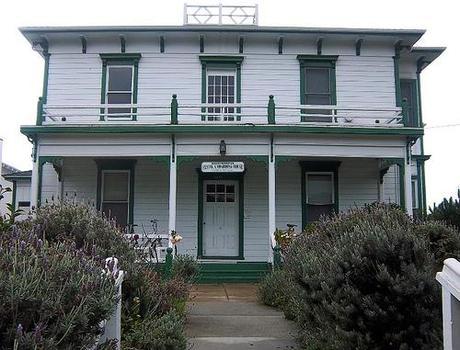
For years, this was home to many of the costumers, artists, technicians, and movie extras who were involved with the film industry.
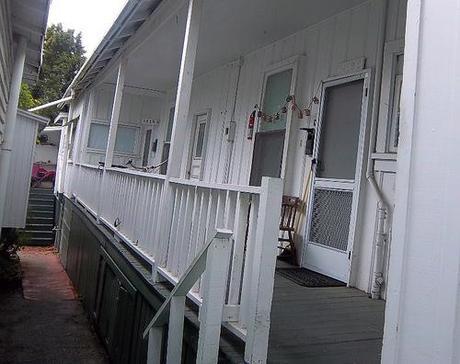
And while the Flying A Boarding House was home to extras and technicians and production staff, many of the stars and executives lived in other accommodations nearby.
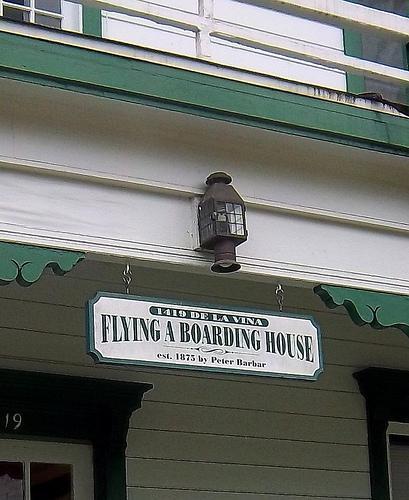
One of the favorite hotels was the Edgerly Court Hotel, located at the corner of Sola and Chapala Streets. The sturdy brick and timber structure was built exclusively for people employed by the local film industry.
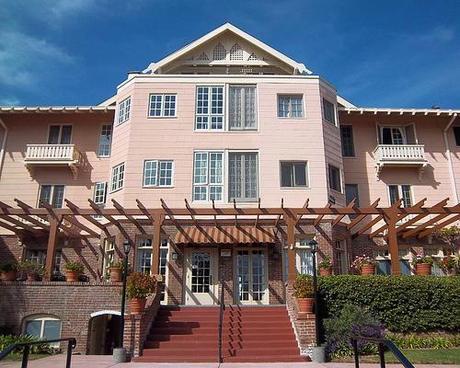
It offered more commodious and elegant accommodations than the boarding house. Today, the Edgerly Apartments provide affordable housing for income-qualified senior citizens. The building is beautifully maintained, and looks much the same today as it did when first built. It is a downtown jewel.
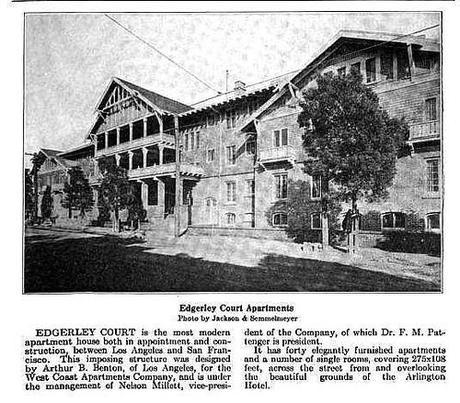
Another luxurious option was the Arlington Hotel, located across the street from the Edgerly Court Hotel. The Arlington, one of the west coast's most famous luxury hotels, eventually became the Arlington Theater.
Today, the Arlington Theater is a movie palace in the grand tradition of a bygone era. It is also an important venue for showcasing live events: musicians, dancers, authors, and other performance events are hosted throughout they year.
It is also the beloved and sentimental site of many annual Santa Barbara International Film Festival events.
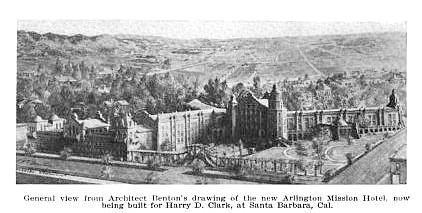
The annual Santa Barbara International Film Festival allows us to bask in the glamour and magic of the film industry, all over again.
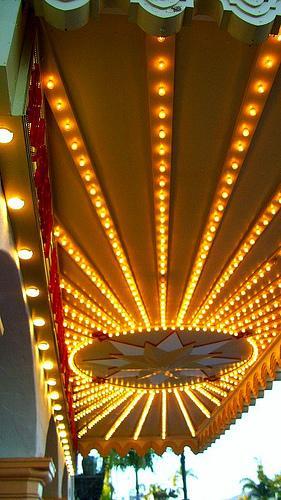
The 26th annual Santa Barbara International Film Festival continues through February 6, 2011, with screenings, award cermonies, and special events scheduled every day.
Visit their website to purchase view the schedule, purchase tickets, or to learn more about the people and events of the 2011 SBIFF.
